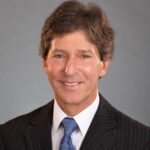Authored by: Richard N. Shapiro
A recent report by a Washington D.C. based consumer advocacy group recently concluded that more work needs to be done to make the general public aware of the identity of those doctors who are repeat offenders in the medical malpractice arena. In addition to recommending improvements in patient safety and healthcare providers training, the report stressed the importance of disciplining repeat offenders. Only 33% of the medical doctors who made 10 or more malpractice payments were disciplined by their state medical board and some doctors, with up to 31 medical malpractice payments have never been subjected to any disciplinary action.
Currently, attorneys and patients have no way of knowing who these “Bad Doctors” are. This is because the National Practitioner Data Base public use file conceals practitioners personal information. The consumer advocacy group urged Congress to lift the veil of secrecy which is used to hide doctors who are frequently accused of medical malpractice, especially considering the small percentage of doctors responsible for the majority of the malpractice committed in the United States.
While 82% of doctors had not made a medical malpractice payment since 1990, 5.9% of the others accounted for 57.8% of all medical malpractice payments since 1991.
The report pokes a hole in the myth that it is lawsuits that is driving malpractice insurance premiums through the roof. It validates a lot of what consumer advocates and plaintiff attorneys have been saying for a number of years – that there is a great medical malpractice hoax being promoted by the medical community and insurance industry in this state.
For more information on this subject matter, please review our section on Medical Malpractice and Negligent Care.

Rick Shapiro has practiced personal injury law for over 30 years in Virginia, North Carolina, and throughout the Southeastern United States. He is a Board-Certified Civil Trial Advocate by the National Board of Trial Advocacy (ABA Accredited) and has litigated injury cases throughout the eastern United States, including wrongful death, trucking, faulty products, railroad, and medical negligence claims. During his three-decade career, Shapiro has won client appeals before the VA Supreme Court, VA Court of Appeals, NC Supreme Court, SC Supreme Court, WV Supreme Court, TN Supreme Court, and three times before the United States Court of Appeals for the Fourth Circuit, underscoring Shapiro’s trial achievements. In addition, he and his law firm have won settlements/verdicts in excess of $100 million. His success in and out of the courtroom is a big reason why he was named 2019 “Lawyer of the Year” in railroad law in U.S. News & World Report's Best Lawyers publication (Norfolk, VA area), and he has been named a “Best Lawyer” and “Super Lawyer” by those peer-reviewed organizations for multiple years. Rick was also named a “Leader in the Law, Class of 2022” by Virginia Lawyers Weekly (total of 33 statewide honorees consisting of lawyers and judges across Virginia). And in September 2023, Rick was selected as a recipient of the National Board of Trial Advocacy (NBTA) 2023 President’s Award. Although many nominations were submitted from across the country, Rick was just one of eight attorneys chosen by the prestigious National Board which certifies civil trial attorneys across the U.S. Rick was also recently named to Virginia Lawyers Weekly 2024 Virginia’s Go To Lawyers Medical Malpractice. The attorneys awarded this honor are nominated by their colleagues and chosen by a panel from the publication.










Comments for this article are closed.